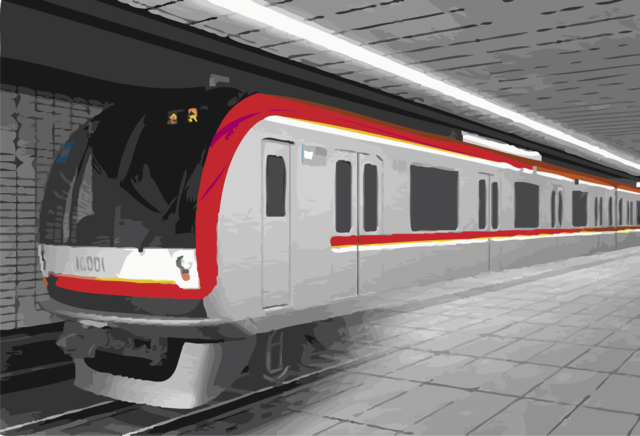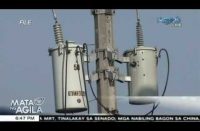
(Eagle News) – The construction of the Metro Manila Subway system will now start with the groundbreaking of the 36-kilometer railway system — the first underground railway system in the country — which will also use Japanese technology.
The Metro Manila Subway that will be designed with the Tokyo Subway in mind, will be flood and earthquake resilient.
It is dubbed as the “project of the century” and is designed to run trains at the speed of 80 kilometers per hour.
-Panelo: Next admin should support subway completion by 2025-
It is expected to be partially operable by 2022 at the end of the administration of President Rodrigo Duterte, and is targeted to be fully operational for all 15 stations by 2025.
Because of this, Presidential Spokesperson Salvador Panelo made the appeal that the succeeding administration would support the efforts to complete the railway on time.
“The critics say it can never be done. The cynics say it is just a dream. We are pleased to announce today’s groundbreaking ceremony of the Metro Manila Subway, which will be the first-ever underground railway system in the Philippines,” Panelo said.
“With this foundation, we request succeeding administrations to exert the same effort until the railway system is fully completed,” Panelo said in a statement.
The Metro Manila Subway will be mostly, but not entirely, underground.
-“Incredible subway”-
Transportation Secretary Tugade, in his speech during the groundbreaking rites in Valenzuela City, said that that Japanese technology to be employed in the design and construction of the Metro Manila Subway has been tried and tested.
“Ginagamit natin ‘yung teknolohiya ng bansang Hapon, ibig sabihin, ‘yung teknolohiya na tugma at tested sa baha saka lindol. Pagka tayo ay nagkabaha at nagkalindol, nakaaddress ‘yan (We are using the technology from Japan. This means this technology is applicable and tested against flood and earthquakes. In case, we have flooding or an earthquake, that will be addressed),” Tugade told reporters.
“It will be quake and flood-resilient,” he stressed, as he described the project as an “incredible subway.”
This flagship project of the Duterte administration under the “Build, Build, Build” program will be built through the assistance of the Japanese government, particularly a P51 billion Official Development Assistance (ODA) loan from the Japan International Cooperation Agency (JICA).
The loan agreement was signed between President Duterte and Prime Minister Shinzō Abe in November 2017, and on March 16, 2018, Japan signed the first part of a 104.5 billion yen (approx. US$957 million) loan for the subway.
By 2022, its first three stations — the Quirino Highway-Mindanao Avenue Station, Tandang Sora Station, and North Avenue Station — will be operational.
By 2025, the 36-kilometer subway, with all 15 stations – from Quirino High way in Quezon City to NAIA Terminal 3 in Pasay City, and FTI in Taguig — will be fully operational.
-30 minutes from QC to NAIA-
With trains travelling at a speed of up to 80 kilometers per hour, the travel time from Quezon City to NAIA Terminal 3 is seen to be as short as 30 minutes.
The rail system will be crossing seven local governments, and pass through three of Metro Manila’s business districts.
Transportation Undersecretary Timothy John Batan said that in the first full year of operations in 2025, the subway is expected to serve up to 370,000 passengers a day. It is, however, designed to accommodate up to 1.5 million passengers per day.
-Incredibly interconnected-
He noted that the ambitious project will be “incredibly expansive” and “incredibly interconnected.” The subway’s North Avenue station will be interconnected to LRT 1, MRT-3 and MRT-7 at the common station. It will also interconnect with LRT-2 at the subway’s Anonas station.
Batan said that the subway “will not only be interconnected with the North South commuter railway system or PNR Calamba at FTI station,” but is also designed “to have a physical through run into the 56-km PNR Calamba segment.”
“Meaning, you can board a subway train here in Valenzuela, heading almost 100 kilometers to Calamba, without changing trains,” he stressed.
It is also interconnected with NAIA at the subway’s terminal 3 station, and with the country’s road network, he said.
Batan said that the subway will also have an “intermodal facility” which will provide an “incrediblly seamless transfer” to and from modern buses, modern jeepneys, and other modern road-based transport.
He said each eight-car train can carry as much as 2,200 passengers. Trains, running at 80 kph, will also be stopping at stations every five minutes. Each station will also be fully airconditioned.
On November 2018, OC Global, a Japanese consortium consisting of Oriental Consultants Global Co. Ltd., Tokyo Metro Co. Ltd., Katahira & Engineers International, Pacific Consultants Co Ltd., Tonichi Engineering Consultants, Inc., and Metro Development Co. Ltd., was awarded the 11 billion pesos contract to build the subway.
Last February 20, the DOTr signed the main contract for the design and build of the Metro Manila Subway’s depot and first three stations, or its partial operability section, along with the structures and facilities of the Philippine Railway Institute.
Batan thanked the Japanese government and JICA because the funding from the Japanese government for the Metro Manila subway is the “largest Japanese funded pipeline of ongoing projects anywhere in the world”
-Tunnel boring machines to arrive in 4 months –
The Metro Manila Subway will be using tunnel boring machines which have been already inspected by Secretary Tugade when he visited Japan last week.
These tunnel boring machines will be arriving in the country in the next three or four months to speed up the railway’s construction.
A Japanese-Filipino consortium, consisting of Shimizu Corp., Fujita Corp., Takenaka Civil Engineering Co. Ltd. and EEI won the design and build contract for the Metro Manila Subway’s first three stations, or its partial operability section.
For his part, Panelo asked the public to be patient as the construction of the project is expected to cause traffic, particularly in the railway’s targeted stations.
“We also ask the public to remain patient as it is us who will greatly benefit from gains of this major infrastructure project in the near future,” Panelo said.
Among those present during the groundbreaking ceremony are Executive Secretary Salvador Medialdea, Japanese Ambassador to the Philippines Koji Haneda, DOTr Secretary Tugade, DBM Secretary Benjamin Diokno, DPWH Secretary Mark Villar, NEDA Director-General and Socio-Economic Planning Secretary Ernesto Pernia, JICA Philippines Chief Representative Yoshio Wada, and representatives of the Shimizu-Fujita-Takenaka-EEI Joint Venture.





